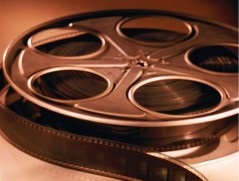
The Power of Animation
The ability of animation to do away with the traditional boundaries of conventional live film and create virtual worlds and characters is something that has always appealed massively to the marketers. Indeed it has redefined much of the video marketing industry and created an entire industry within it. As processing power and computing memory have become ever cheaper the availability of high quality animation has grown exponentially.
But what is it exactly that gives animation an advantage over the powerful realism of conventional filming from a marketing perspective? The answer to this question depends entirely upon what you are trying to market and who you are marketing it to. With this in mind, there seem to be two distinct advantages animation has over conventional live film. The first is the power to create fantasy and the second is the power to create clarity.
Suspending Disbelief
There is an inherent boundlessness in animation. It is this potential to realize any vision or concept, this empowerment of the imagination, that appeals so directly to the creativity in any marketer. Through the power of animation companies and brands can create worlds that amaze and beguile us. As the processing power needed to create these worlds has grown ever cheaper, these worlds have grown more realistic and, perhaps more importantly, the characters who inhabit them more believable.
Animation’s power to create compelling fantasies appeals to a viewer’s desire to willingly suspend disbelief. The willing suspension of disbelief was a term first coined by the 19th Century philosopher Samuel Taylor Coleridge but its relevance is perhaps more pertinent today. The ability to break down the walls of cynicism that exist in an audience saturated by advertising and take them into another world, even if just for a few seconds, is a powerful tool indeed. For a moment the viewer feels they aren’t being sold a product, or even an idea, but an entire world, inhabited by novel and often lovable characters.
Wonga are one of many companies that have chosen to use animation in their marketing mix in order to bolster its appeal; choosing to eschew its old age pensioner puppets for lifelike animated versions. By doing so, the company can put the characters in ever more bizarre and humorous situations, playing on the contradiction between their age and apparent youthful behavior. Payday loan companies don’t enjoy the best PR it’s fair to say, so the ability for Wonga to potentially disarm and amuse an audience in this way is very powerful indeed.
Crystal Clear Clarity
The ability to accurately communicate complexity is the other great advantage animation has over conventional film. In a B2B setting it’s unlikely you’ll want your audience to willingly suspend their disbelief, even for a moment. Getting across complex information about a complex product is the modus operandi here.
Animation can involve any number of techniques, some of which are extremely effective at representing the internal workings of machinery or architecture. What’s more these products or buildings don’t necessarily have to exist. This power animation has to visually represent products still in the post production phase, is cherished as much by R&D as it is by marketing departments.
The ability to bring clarity and know-how by visualising a product both externally and internally is still being realised in many industry sectors, especially those that haven’t traditionally embraced animation in the same way that the consumer marketing sector has.
The growth of medical motion graphics is a prime example of how a sector as large and diverse as healthcare, has embraced 2D and 3D animation as a means to convey complex issues and messages. By graphically representing the internal workings of the human body, clinicians are able to work with video marketers and animators to show the effects new drugs or medical devices can have.
Engineering is another sector that has benefited from the empowerment of animation techniques. Architectural flythroughs for example offer an incredibly effective means of displaying the inner workings of complex machinery and devices. Stereoscopic 3D filming can be utilised to give real depth of vision and have even been used at trade fairs to wow prospective clients and customers.
Timelapse may not technically fall under the bracket of animation but it is another technique that can produce stunning and illuminating results. Timelapse photography is especially effective on construction sites to show progress over a long period.
Mixing it up
It’s important to remember that utilising animation in either a B2B or a B2C setting doesn’t have to mean abandoning traditional filming techniques altogether. Some of the most effective marketing videos utilise both. Understanding when to use animation and when to use real people is the trick to striking this balance.
As human beings we tend to be more moved by real human stories which is why simply flying the viewer through your product won’t necessarily tell the whole story. From a marketing perspective application is equally as important as specification, which is why testimonial and interview remain two of the most important techniques in any marketers arsenal, whether they’re working with animation or not.
